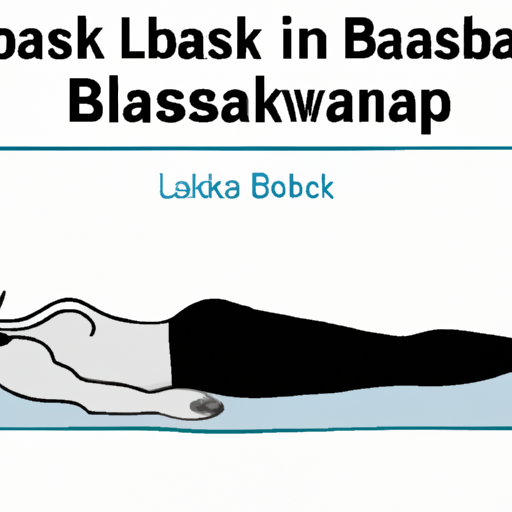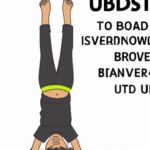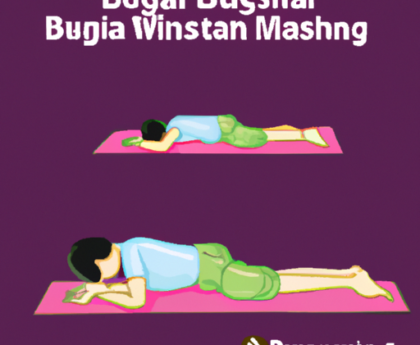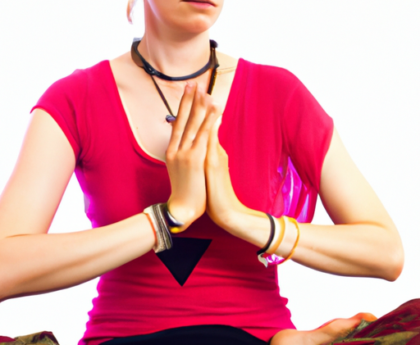“Unlock Your Strength with Salabhasana: The Locust Pose!”
Introduction
Salabhasana, or Locust Pose, is a classic yoga pose that is beneficial for strengthening the back and core muscles. It is a great pose for improving posture and balance, and can be used to help relieve back pain. This pose can be done by beginners and experienced yogis alike, and can be modified to suit different levels of flexibility. In this article, we will discuss how to do Salabhasana, the benefits of the pose, and how to modify it for different levels of experience.
How to Prepare for Salabhasana (Locust Pose): A Step-by-Step Guide
Salabhasana, or Locust Pose, is a classic yoga pose that strengthens the back and core muscles. It is a great pose for improving posture and balance, and can be used to help relieve back pain. Here is a step-by-step guide to help you prepare for Salabhasana.
1. Begin by lying on your stomach with your arms at your sides and your forehead resting on the floor.
2. Take a few deep breaths to relax your body and mind.
3. Place your hands underneath your hips, palms facing down.
4. On an inhale, slowly lift your head, chest, and legs off the floor. Keep your arms and legs straight and your gaze forward.
5. Hold the pose for a few breaths, then slowly lower your body back to the floor.
6. Repeat the pose a few times, gradually increasing the length of time you hold the pose.
7. When you are finished, rest in Child’s Pose for a few breaths.
By following these steps, you can safely and effectively prepare for Salabhasana. Remember to listen to your body and take breaks when needed. With practice, you will be able to master this pose and reap the many benefits it has to offer.
Benefits of Salabhasana (Locust Pose) for Improved Posture and Core Strength
Salabhasana, or Locust Pose, is a beneficial yoga pose that can help improve posture and core strength. This pose is a great way to strengthen the back muscles, which are essential for good posture. It also helps to strengthen the abdominal muscles, which are important for core strength.
When practicing Salabhasana, the body is in a prone position, with the arms and legs extended. The arms are extended out to the sides, and the legs are extended straight back. The chest is lifted off the floor, and the chin is tucked in. This pose helps to strengthen the muscles of the back, shoulders, and arms. It also helps to stretch the muscles of the chest, abdomen, and hips.
Salabhasana helps to improve posture by strengthening the back muscles. When the back muscles are strong, they can support the spine and help to keep it in proper alignment. This can help to reduce pain and discomfort in the back, neck, and shoulders.
Salabhasana also helps to strengthen the abdominal muscles. When the abdominal muscles are strong, they can help to support the spine and keep it in proper alignment. This can help to improve posture and reduce pain and discomfort in the back, neck, and shoulders.
In addition to improving posture and core strength, Salabhasana can also help to improve flexibility. This pose helps to stretch the muscles of the chest, abdomen, and hips. This can help to improve range of motion and reduce stiffness in the body.
Overall, Salabhasana is a beneficial yoga pose that can help to improve posture and core strength. It can also help to improve flexibility and reduce pain and discomfort in the back, neck, and shoulders. Practicing this pose regularly can help to improve overall health and wellbeing.
Modifications and Variations of Salabhasana (Locust Pose) for Beginners
Salabhasana, or Locust Pose, is a classic yoga pose that is beneficial for strengthening the back and core muscles. It is a great pose for beginners to practice, as it can be modified to suit different levels of flexibility and strength.
To begin, lie on your stomach with your arms at your sides and your forehead resting on the floor. Inhale and lift your head, chest, and legs off the floor. Keep your arms at your sides and your legs together. Hold the pose for a few breaths, then slowly lower your body back to the floor.
For a more challenging variation, you can lift your arms off the floor and reach them forward. This will help to engage your back muscles and increase the intensity of the pose.
If you are a beginner, you can also modify the pose by keeping your legs bent and your feet on the floor. This will reduce the strain on your back and make the pose more accessible.
To make the pose even easier, you can place a block or bolster under your chest and abdomen. This will help to support your body and make the pose more comfortable.
Finally, if you are feeling particularly tight in your back, you can practice the pose with your arms at your sides and your hands clasped together. This will help to open up your chest and shoulders and make the pose more accessible.
No matter what level of experience you have with yoga, Salabhasana can be a great pose to practice. With a few modifications, it can be adapted to suit any level of flexibility and strength.
Tips for Mastering Salabhasana (Locust Pose) and Reaping the Benefits
Salabhasana, or Locust Pose, is a beneficial yoga pose that can help to strengthen the back and core muscles, improve posture, and increase flexibility. To master this pose and reap its benefits, it is important to practice with proper form and alignment. Here are some tips to help you master Salabhasana and reap its benefits.
1. Start by lying on your stomach with your arms at your sides and your forehead resting on the floor.
2. Inhale deeply and, as you exhale, lift your head, chest, arms, and legs off the floor. Keep your arms parallel to the floor and your legs together.
3. Engage your core muscles and press your pubic bone into the floor.
4. Hold the pose for a few breaths, then slowly lower your body back to the floor.
5. To increase the intensity of the pose, you can lift your arms and legs higher off the floor.
6. To deepen the stretch, you can reach your arms back and clasp your hands together.
7. To protect your lower back, focus on engaging your abdominal muscles and keeping your pelvis in a neutral position.
8. To increase the benefits of the pose, practice it regularly.
By following these tips, you can master Salabhasana and reap its many benefits. Regular practice of this pose can help to strengthen the back and core muscles, improve posture, and increase flexibility.
How to Incorporate Salabhasana (Locust Pose) into Your Yoga Practice
Salabhasana, or Locust Pose, is an important pose in many yoga practices. It is a backbend that strengthens the spine, opens the chest, and stretches the front of the body. It is also a great pose for improving posture and relieving stress.
To begin, lie on your stomach with your arms at your sides and your forehead resting on the floor. Take a few deep breaths to relax your body. On an inhale, lift your head, chest, and legs off the floor. Reach your arms back and press your shoulder blades together. Keep your legs together and your feet flexed. Hold the pose for five to ten breaths.
To deepen the pose, you can clasp your hands behind your back and press your arms into the floor. You can also lift your arms up and away from your body, reaching your fingertips toward the ceiling.
When you are ready to come out of the pose, slowly lower your legs and chest to the floor. Take a few breaths in Child’s Pose to relax your body.
Salabhasana is a great pose to incorporate into your yoga practice. It strengthens the spine, opens the chest, and stretches the front of the body. It is also a great pose for improving posture and relieving stress. With regular practice, you will begin to feel the benefits of this pose.
Common Mistakes to Avoid When Doing Salabhasana (Locust Pose)
When practicing Salabhasana (Locust Pose), it is important to be mindful of the following common mistakes in order to ensure that the pose is performed safely and effectively.
1. Not engaging the core: It is essential to engage the core muscles when performing Salabhasana. This helps to protect the lower back and ensure that the pose is performed with proper alignment.
2. Not lifting the chest: When performing Salabhasana, it is important to lift the chest off the floor. This helps to open the chest and shoulders and allows for a deeper stretch.
3. Not keeping the legs together: It is important to keep the legs together when performing Salabhasana. This helps to ensure that the pose is performed with proper alignment and prevents strain on the lower back.
4. Not keeping the arms straight: When performing Salabhasana, it is important to keep the arms straight and parallel to the floor. This helps to ensure that the pose is performed with proper alignment and prevents strain on the shoulders.
5. Not breathing deeply: It is important to take deep breaths when performing Salabhasana. This helps to relax the body and allows for a deeper stretch.
By avoiding these common mistakes, practitioners can ensure that Salabhasana is performed safely and effectively.
Conclusion
Salabhasana is a great pose for strengthening the back and core muscles, as well as improving posture and balance. It can be done by anyone, regardless of their level of experience, and can be modified to suit individual needs. With regular practice, Salabhasana can help to improve overall strength and flexibility, as well as reduce stress and tension. So, if you’re looking for a pose to help you build strength and improve your posture, give Salabhasana a try!




